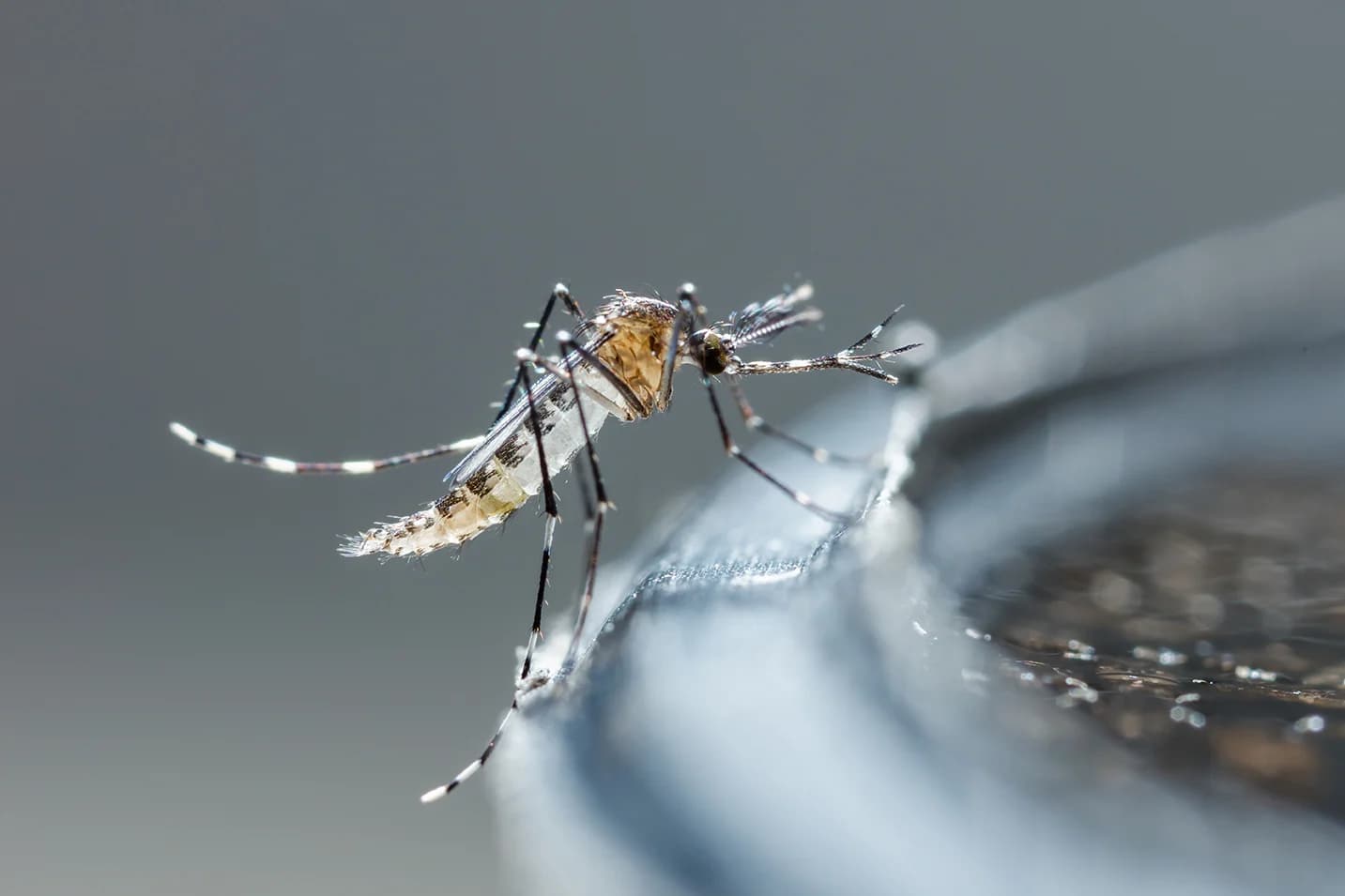Article
7 Tips for Insect-Borne Disease Prevention
7 MAY 2025
/
2 min read
Jump to

During peak travel season, a few proactive steps can help ensure insect-borne illness doesn’t disrupt an otherwise perfect getaway. Those engaging in camping, hiking, or adventure travel in rural areas are generally at the greatest risk of exposure to disease carrying insects. However, even urban visitors need to take precautions to avoid insect exposure in some locations.
Insects in various parts of the world, especially the tropics, can transmit significant illnesses, such as chikungunya, dengue, malaria, rickettsial diseases (like Rocky Mountain spotted fever), yellow fever, Zika, and Lyme, any of which can potentially be life-changing or life-threatening. It’s important to know the disease risks in the areas where you will be traveling, including the insects that transmit diseases and the times when these insects are most active. For example, dengue fever, chikungunya, and Zika virus are transmitted by mosquitoes that are active during the day and usually present in urban areas. Mosquitoes that transmit malaria are active from dusk to dawn. Ticks may be present at any time in forested or tall grass areas.
The risk of acquiring these diseases can be reduced through the use of personal protective measures and, in some cases, a preventive drug or vaccine. No one prevention is perfect, so using as many layers of protection as possible is best when in an “at-risk” area.
The following are 7 personal protective measures to help keep you and your family safe from insect-borne diseases:
Wearing clothing that covers as much skin as practicable.
- Clothing should be light in color (this makes it easier to spot ticks).
- Clothing should be long-sleeved shirts and long pants when possible.
- Pants should be tucked into socks when traveling in an area with risk for tick-borne diseases (typically grassy or scrub areas).
Use a repellent on all exposed, non-sensitive areas of the body.
- Use a repellent containing DEET (30-35% concentration) or picaridin (20% concentration or greater for tropical destinations, also known as icaridin).
- Apply repellent frequently (every two to three hours) to ensure continuous protection.
- If also using sunscreen, the sunscreen should be applied first, letting it dry completely, before applying the repellent.
- Avoid repellent-sunscreen products as the effectiveness of the sunscreen may be diminished.
Determine the time of day and type of insects to be avoided when choosing when to apply repellent.
- Some insects and areas only require protective measures from dusk to dawn while others require measures to be taken throughout the entire day.
Treat clothing and gear with permethrin (or other pyrethroid).
- Do not use permethrin products directly on skin.
- Permethrin is applied as a spray – enough to make the fabric damp – then allowed to dry. Never wear permethrin treated clothing before it dries.
Sleep under a mosquito net if not in a closed, climate-controlled room.
- Permethrin-treated nets provide more protection.
- Regularly check the net for rips and tears.
- Keep the net always tucked in around the bed.
- Ensure that all open windows have insect screens.
Use area repellent products.
- Use area repellent products such as aerosol sprays, vaporizer devices, or smoldering coils. These products often contain a pyrethroid.
Perform a full body check for adult ticks and nymphs during and after outdoor activities.
- Pay close attention to the neck, scalp, groin, armpits, and navel.
- Remove attached ticks immediately, preferably with forceps or fine-tipped tweezers, grasping the tick as close to the skin surface as possible, and pulling directly upward, steadily, without twisting or jerking.
- Clean the area where the tick was removed from with an alcohol swab or soap and water.
- Avoid handling the tick with bare hands.
- For most, but not all, tick-borne diseases, the risk of disease transmission is dependent on the duration of time that the tick is attached, so frequent checks and early removal is important.
- If you do remove a tick, contact your physician to determine if any type of prophylactic treatment may be beneficial.
For more information on general protective measures against insect-borne illness, contact the PSG medical team today.
Related
Tags
PROFOUND
PEACE OF MIND,
IT SUITS YOU
Submit a preliminary application to learn more about the full benefits of membership.
FEATURED Insights
THOUGHTS WELL
WORTH CONSIDERING
Employing a team of 200+ analysts around the world, Crisis24 is the only source you need for on-point, actionable insights on any risk-related topic.

Case Study
Cyber Resilience for UHNW Families: Building an Accountability Framework for Risk Mitigation
Cybersecurity governance for ultra-high-net-worth families requires clear implementation of ownership accountability, personnel lifecycle management, and vendor oversight protocols.
October 20, 2025

Case Study
Precision Care for the Global Elite: Case Studies in Safeguarding Health, Privacy, and Leadership
Explore a collection of case studies that illustrate how Crisis24 Private Strategic Group delivers the most exceptional and integrated personal and medical protection available.
September 22, 2025

Case Study
Cyber Risk Mitigation: Securing the UHNW Family Digital Infrastructure
Explore strategies to defend UHNW families from cyber threats with segmentation, device security, and continuous digital risk oversight.
September 11, 2025

Article
Crypto Kidnappings: The Rise of Violent Crime in the Age of Digital Wealth
Crypto kidnappings are surging worldwide, targeting wealthy investors and everyday users. Learn how criminals operate and how to stay protected.
By Alexander Mills
August 20, 2025



